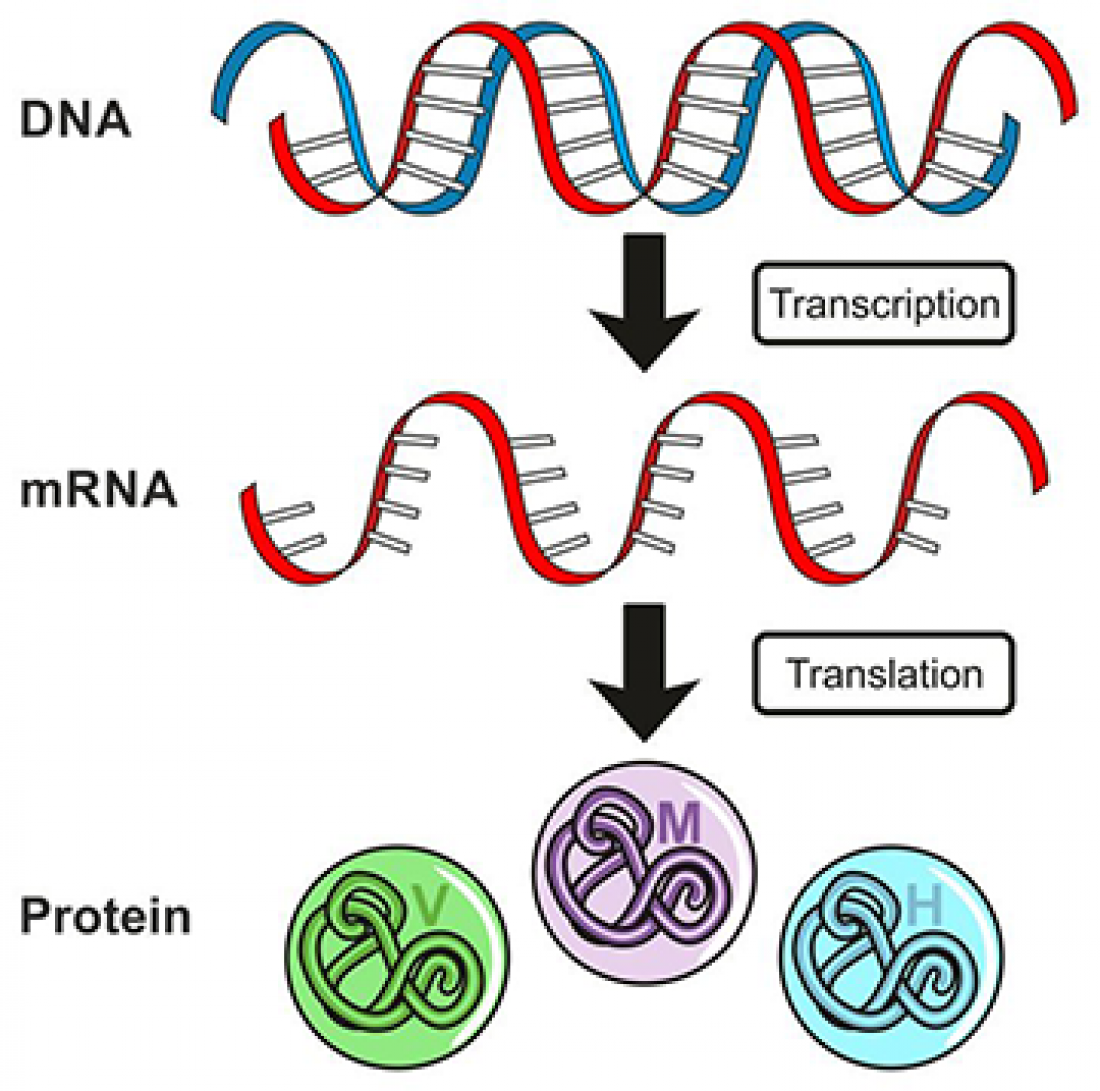Infographic showing the process of transcription and translation from DNA to RNA to protein.
- Despite great investments, an effective drug-based treatment for Alzheimer’s disease, the most common form of dementia among the elderly, remains elusive
- Scientists led by Duke-NUS Medical School, in collaboration with Monash University, have published an online atlas of gene expressions at single-cell level in Alzheimer’s disease brains, aiming to boost to efforts to identify gene targets for drug development
SINGAPORE, 28 November – Alzheimer’s disease is the most common form of dementia in the elderly, which is increasingly important to the disease burden in ageing societies like Singapore. Despite this and the myriad investments into research on the disease, there is currently no effective treatment and an effective drug is yet to be discovered.
Researchers led by Duke-NUS Medical School, in collaboration with Monash University, have now published a comprehensive and detailed study of gene expression changes in specific human brain cell types that are associated with progression of Alzheimer’s disease. Leveraging the latest single-cell sequencing technology, the findings yield insights that may aid in scientists’ pursuit of potential druggable gene targets for drug development.
“Limited information has been available about how individual cell types in the brain contribute to Alzheimer’s disease,” said study co-senior author Assistant Professor Owen Rackham, from Duke-NUS’ Cardiovascular and Metabolic Disorders (CVMD) Programme. “Although various genes have been implicated in Alzheimer’s disease, we do not know which cell types harbour these differences in gene expression.”
Focusing on the need to study cell types other than neurons, the main type of cell found in the brain, the researchers applied an innovative single-nucleus RNA sequencing technology called DroNCSeq to cells from the brain’s entorhinal cortex, sampled from both control and Alzheimer’s disease brains, yielding a total of over 13,000 high quality nuclei that they could analyse for gene expression differences. The entorhinal cortex, together with the hippocampus, are the regions of the brain that scientists understand to be involved in processing and storing memories, perceiving time, and predicting the future.
Associate Professor Enrico Petretto, co-senior author of the study, explained, “Our research sought to explore whether the answer to treating Alzheimer’s lies in understanding how non-neuronal cells are affected during the disease. Using DroNCSeq, we were able to study differences in gene expressions at single-cell resolution, which is key to understanding how genes identified by genome-wide association studies in specific cell subpopulations are associated with Alzheimer’s disease.”
The study identified new subpopulations of cells present only in Alzheimer’s disease patient brains as well as common and distinct networks of genes and functions that were coregulated across different types of cells. These results provide insights into the coordinated control of Alzheimer’s disease risk genes and their cell type-specific contribution to disease susceptibility, and can ultimately help scientists identify potential gene targets for Alzheimer’s disease drug development.
To facilitate access to these insights by other researchers, the research team published an interactive online tool to visualise and analyse their dataset, providing a unique resource for future studies seeking to understand cellular differences and define functional changes at single-cell level in the human Alzheimer’s disease brain.
Professor Patrick Casey, Senior Vice Dean at Duke-NUS, commented, “Alzheimer’s disease affects not only the patient, but also their caregivers. It is a global disease with biological, social, psychological, and economic impacts that will only grow in importance with increasingly ageing populations around the world. This study underscores the important role technological innovation and data science can play not only in helping us to better understand the disease, but also to identify potential drug targets.”
The research team are following up with further research on identified potential druggable genes.



